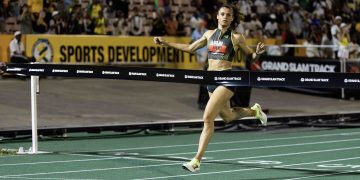Gene McCarthy became the Senior Vice President of Footwear at Under Armour in mid August. A thirty year veteran of the performance sports footwear wars, McCarthy’s resume includes Nike, adidas/Reebok and Timberland. A competitive middle distance runner through college, McCarthy uses that work ethic in his daily business dealings. Enthusiastic, affable, and very precise in his language, McCarthy’s energy and experience will assist Under Armour as they develop a focused performance footwear line.
I found his observations fascinating and his view of the business world, and how sports interacts with it, to be the highlight of the interview.
This interview was conducted via phone on August 25, 2009:
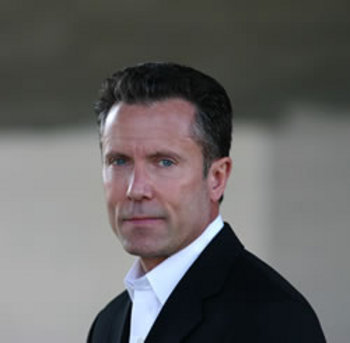
Gene McCarthy, Senior VP/Footwear, Under Armour, photo courtesy of Under Armour Communications.
RBR, #1: What can you tell us about the competative nature of the sports footwear business?
Gene McCarthy: I am blessed, as a former runner, to have worked for all three companies through formative times, from the colossal growth at Nike, to Reebok as part of the Adidas powerhouse, then at Timberland, as we re-invented the youth business. All three were missions. One thing about the athletic shoe industry is the competitive nature of the business. Every company is fighting for mind space and consumer base. This industry actually invented itself. There is no college in the land that teaches the shoe industry. The industry by nature is very competitive and sometimes can even get personal. Overall though, the industry is very spirited.
RBR, #2: How important is solid brand identity?
Gene McCarthy: Incredibly important! Brands must have a distinct emotional connection with the consumer. Brands should always invite the consumer in. The best brands focus on the emotional connection. For example, certain marks have meanings that transcend their design. Take Ralph Lauren for instance; when people look at the mark they see classic or American style. They don’t actually see a man on a horse with a stick…
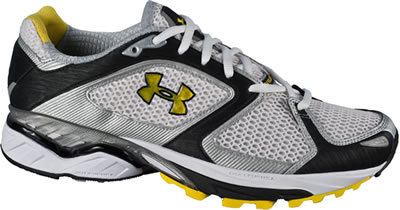
Under Armour, Revenent, photo courtesy of UA communications.
RBR, #3: The Under Armour apparel brands is about performance and being the best it can be, how do you see that related to footwear?
Gene McCarthy: Kevin Plank founded the UA brand because he was determined to create something better and offer the ultimate apparel solution. Under Armour would help regulate your temperature and keep you dry and light. The apparel defines performance and moisture wicking attributes. It is a second nature, completely organic concept, which began on the field. For running footwear to be successful, we do not want runners to think about what the shoe can do, or how it does it. We want them to put them on, run, and have them become an organic part of their being and performance. If this doesn’t happen, we are not doing our job.
RBR, #4: What is the biggest lesson that you learned at Nike?
Gene McCarthy: I was very fortunate to work for each brand. At Nike, it was tell a story, obsess the consumer, and most importantly, that the final ten percent of shoe building is more important than the first ninety percent of shoe building.
RBR, #5: What is the biggest lesson that you learned at Reebok?
Gene McCarthy: The big learning here was that you can’t miss important cultural movements. The big spike came at a critical point: the advent of women having their own voice. The Freestyle was introduced when aerobics was more of a statement than a sport.
RBR,#6: What is the biggest lesson that you learned at Timberland?
Gene McCarthy: How powerful a company can be by becoming socially conscious. You must be considerate of the planet that we all live on and all corporations should strive to merge their commerce agenda with social responsibility.
RBR, #7: How do you take the sensibility of an athlete, and become efficient as a brand? How do you build the right team?
Gene McCarthy: I am the proud father of four kids, 19-28 years old. I told each one of them that their resume may get them the interview, but that their character gets them the job. I look at the team I have now and am very pleased with their talent and their intensity. I want them to know that trust must be at the center at the table; that they can fight like family, since I believe that conflict causes clarity, and that we are here on a mission and not just for a paycheck.
RBR, #8: How will you focus UA for this launch in running footwear? UA had some challenges in the recent running launch, how will you learn from that?
Gene McCarthy: The Under Armour brand has so much excitement and anticipation. I focus on the “wins†of entering an extremely competitive category. We are proud of our first entry into the running market. We entered new channels of distributions, and we were enthusiastically received by our key retails partners. Now we must continue the conversation with the consumer.
In just the two weeks that I have been here, we have already begun to set a direction that expands the conversation with the consumer about Under Armour running. I see the marketplace as made up of runners, people who run, and people who wear running shoes. I will have no permission to speak to the third group if I do not have a laser beam focused on group one. The result will be that we will have a distinctly different approach to athletic specialties, sporting goods and the mall. We will have a clear design language that will capture the DNA of what Under Armour stand for.
RBR, #9: Is there a value in trade shows, like WSA, OR and The Running Event?
Gene McCarthy: Trade shows have become too big and too expensive. The history of trade shows is that they started in some tiny hotel room and product was king, not booth size. I think the industry needs to return to that authenticity, it needs to get smaller and more personal, and I think that for the shows to be effective that there must be a connection to the consumer.
RBR, #10: How does a show stay relevant?
Gene McCarthy: The Running Event is a great example of product at center focus. It must continue to feel small; each brand should always be challenged to do something provocative. By the way, there should be judging at these shows, but it should be about product, not about booth size. Let’s get brands back to healthy competition and become remarkable for their product, not for the size of their marketing budget.
RBR, #11: Under Armour has a strong brand resonance with women, how will you translate that into running footwear?
Gene McCarthy: First of all, UA has a distinct voice to athletes, all athletes. As it relates to women, I want to be very clear– in running, there comes a point in performance or in results, where men and women are genderless, not cute and not macho. I want to go back, as I build a women’s team, by women, for women, from design, to fit to performance, and make sure that it is precisely meeting the needs of women of all levels.
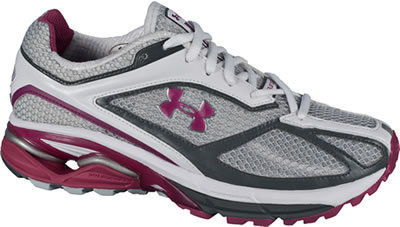
Under Armour, Apparition, women’s model, photo by UA communications.
RBR, #12: And finally, what is your favorite sport activity?
Gene McCarthy: When I grew up as a kid in the Bronx Track and Field allowed me to get a free education, to see the world and to ultimately get a job in the athletic industry. So for that I am extremely grateful, and always will be. The competitive nature of track and field is something that still drives me everyday. As a 1,500 meter runner, you have to be strategic, instinctive and completely aware of everything that is going on around you. When you cross the finish line, even though you should be completely exhausted, you shake the hand of the person you beat or the person who beat you. To me, that is the true spirit of competition. And that is the business acumen I live with today…to be determined, hard working and always gracious.
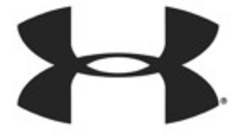
Special thanks to Diane Pelkey, Under Armour Communications and Gene McCarthy for their time and enthusiasm for the task.
For more on Under Armour, please check http://www.underarmour.com
To learn more about our sport, please click on http://www.runningnetwork.com
Author

Larry Eder has had a 52-year involvement in the sport of athletics. Larry has experienced the sport as an athlete, coach, magazine publisher, and now, journalist and blogger. His first article, on Don Bowden, America's first sub-4 minute miler, was published in RW in 1983. Larry has published several magazines on athletics, from American Athletics to the U.S. version of Spikes magazine. He currently manages the content and marketing development of the RunningNetwork, The Shoe Addicts, and RunBlogRun. Of RunBlogRun, his daily pilgrimage with the sport, Larry says: "I have to admit, I love traveling to far away meets, writing about the sport I love, and the athletes I respect, for my readers at runblogrun.com, the most of anything I have ever done, except, maybe running itself." Also does some updates for BBC Sports at key events, which he truly enjoys. Theme song: Greg Allman, " I'm no Angel."
View all posts

